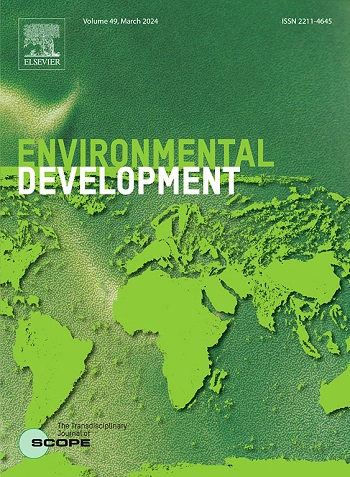放牧强度对干旱草原生态系统服务的影响及其管理意义
IF 5.3
2区 环境科学与生态学
Q2 ENVIRONMENTAL SCIENCES
引用次数: 0
摘要
干旱草地生态系统在维持区域生态平衡、支持畜牧生产等方面具有重要作用。然而,过度放牧和气候变化导致了生态系统服务功能的退化。了解放牧强度与生态环境之间的复杂关系对实现草地生态系统的可持续管理至关重要。以新疆干旱区草原为研究对象,采用双尺度(栅格级和县域级)分析方法,结合Geodetector等多源数据和模型,对2000 - 2020年新疆干旱区草原生态系统服务能力(ESCL)和协同水平(ESSL)的地理特征时空动态进行了评价。结果表明,ESs之间具有显著的协同作用,GI在影响ESs的交互作用中起着关键作用。ESCL和ESSL都与GI呈倒u型关系:在低GI (GI < 0.4)时,ESCL和ESSL表现出协同作用,但当GI超过0.6时,则出现权衡关系。不同放牧强度对草地生态系统ESCL和ESSL的影响在不同空间集群间差异显著,中等放牧水平总体上维持了草地生态系统的可持续性。在南疆等脆弱地区,维持低GI对于保护生态环境至关重要,而在北疆等韧性较强的地区,中等GI (GI 0.4-0.6)有助于优化生态环境效益。研究结果为新疆干旱草原的放牧管理策略提供了科学支撑,为全球干旱区草地资源的可持续利用提供了理论指导。本文章由计算机程序翻译,如有差异,请以英文原文为准。
Effects of grazing intensity on ecosystem services in arid grasslands and implications for management
Arid grassland ecosystems play a crucial role in maintaining regional ecological balance and supporting pastoral production. However, overgrazing and climate change have led to the degradation of ecosystem services (ESs). Understanding the complex relationship between grazing intensity (GI) and ESs is essential for achieving sustainable management of grassland ecosystems. This study focuses on the arid grasslands of Xinjiang, China, using dual-scale analysis (grid and county levels), and integrates multi-source data and models such as the Geodetector to evaluate the spatiotemporal dynamics of GI on ecosystem service capacity (ESCL) and synergy level (ESSL) from 2000 to 2020. Results show significant synergy among ESs, with GI playing a key interactive role in influencing them. Both ESCL and ESSL exhibit an inverted U-shaped relationship with GI: at low GI (GI < 0.4), ESCL and ESSL demonstrate synergy, but when GI exceeds 0.6, a trade-off emerges. The impact of different grazing intensities on ESCL and ESSL varies significantly across spatial clusters, with medium grazing levels generally sustaining the sustainability of grassland ecosystems. In fragile regions like Southern Xinjiang, maintaining low GI is crucial for protecting ESs, while in more resilient areas like Northern Xinjiang, medium GI (GI 0.4–0.6) helps optimize the benefits of ESs. The findings provide scientific support for grazing management strategies in Xinjiang's arid grasslands and offer theoretical guidance for the sustainable use of grassland resources in arid regions globally.
求助全文
通过发布文献求助,成功后即可免费获取论文全文。
去求助
来源期刊

Environmental Development
Social Sciences-Geography, Planning and Development
CiteScore
8.40
自引率
1.90%
发文量
62
审稿时长
74 days
期刊介绍:
Environmental Development provides a future oriented, pro-active, authoritative source of information and learning for researchers, postgraduate students, policymakers, and managers, and bridges the gap between fundamental research and the application in management and policy practices. It stimulates the exchange and coupling of traditional scientific knowledge on the environment, with the experiential knowledge among decision makers and other stakeholders and also connects natural sciences and social and behavioral sciences. Environmental Development includes and promotes scientific work from the non-western world, and also strengthens the collaboration between the developed and developing world. Further it links environmental research to broader issues of economic and social-cultural developments, and is intended to shorten the delays between research and publication, while ensuring thorough peer review. Environmental Development also creates a forum for transnational communication, discussion and global action.
Environmental Development is open to a broad range of disciplines and authors. The journal welcomes, in particular, contributions from a younger generation of researchers, and papers expanding the frontiers of environmental sciences, pointing at new directions and innovative answers.
All submissions to Environmental Development are reviewed using the general criteria of quality, originality, precision, importance of topic and insights, clarity of exposition, which are in keeping with the journal''s aims and scope.
 求助内容:
求助内容: 应助结果提醒方式:
应助结果提醒方式:


